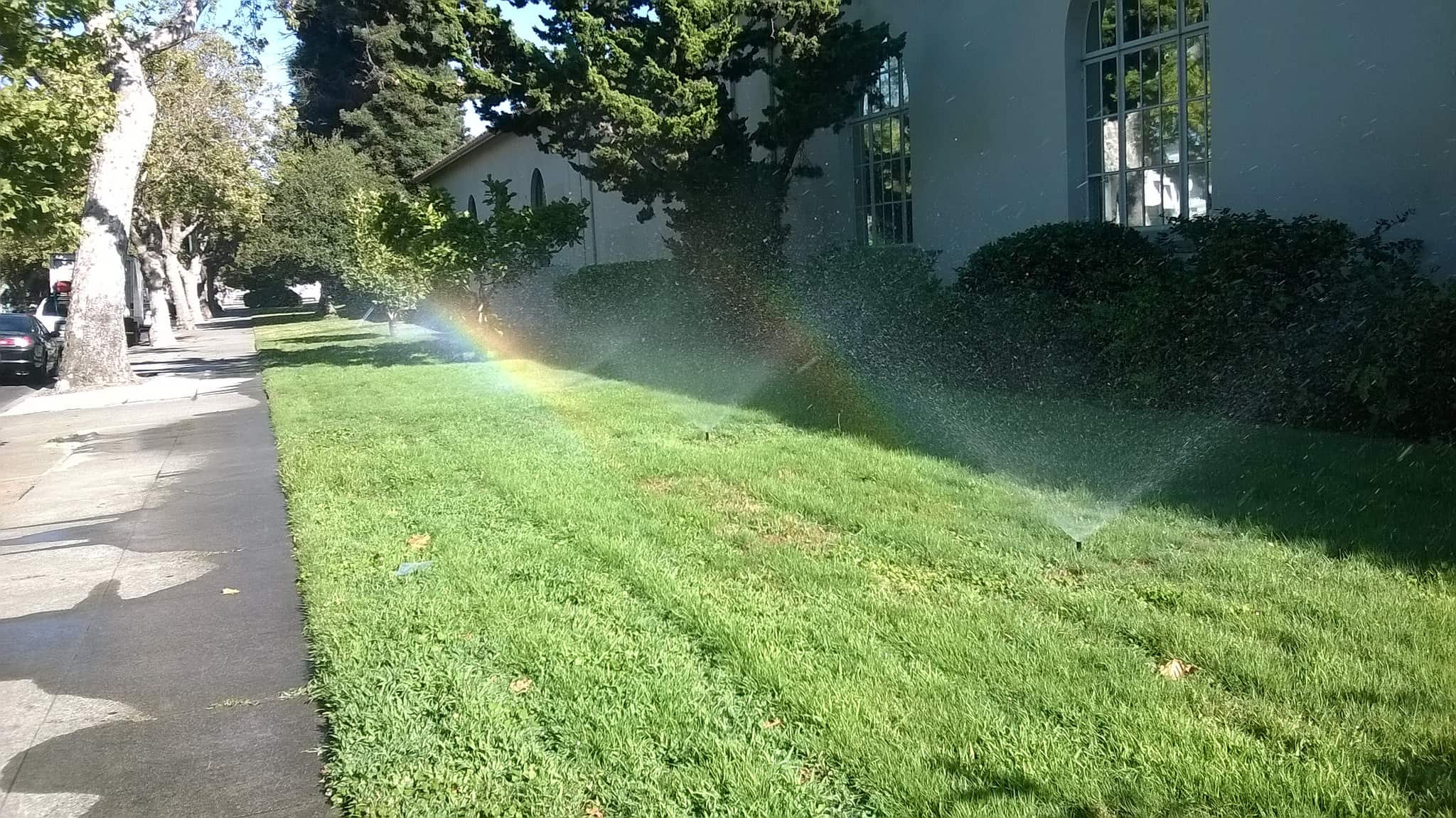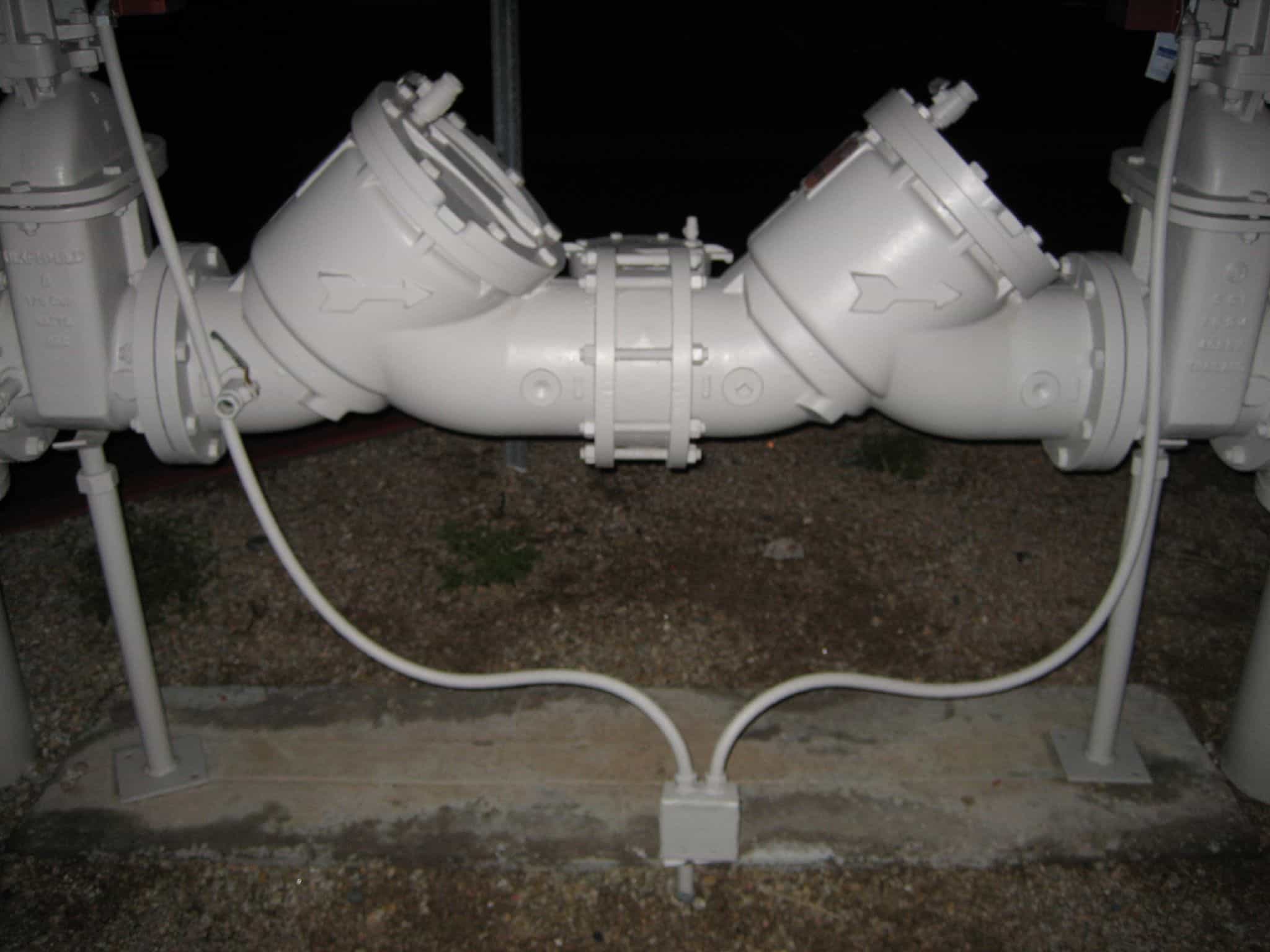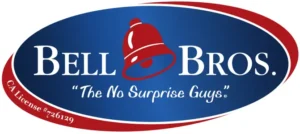![]() It was a typical, long and dry summer in Folsom—caring for my lawn through the hottest months was difficult. Maybe careful water use, an abundance of natural shade, and a top-notch sprinkler system kept the lawn of your Folsom home nice and green. But as temperatures start to drop this fall, your trusty sprinkler system could go from helper to troublemaker.
It was a typical, long and dry summer in Folsom—caring for my lawn through the hottest months was difficult. Maybe careful water use, an abundance of natural shade, and a top-notch sprinkler system kept the lawn of your Folsom home nice and green. But as temperatures start to drop this fall, your trusty sprinkler system could go from helper to troublemaker.
Good lawn maintenance often involves a sprinkler system, but did you know that sprinklers put your family at risk for contaminated water? Folsom gets its drinking water from Folsom Lake, and the city takes special care to ensure this water stays clean. But, if your sprinkler system doesn’t have a high-quality backflow device professionally cared for and maintained, contaminated water can still leak into the supply you use for your home, spreading germs whenever you wash the dinner dishes or have a glass of water at night. Obviously, you want to prevent this. And the best way is to learn about backflow, and why you should winterize this device.
Understanding the Basics of Backflow

Like the name suggests, backflow means water moving backward. When water moves from your water supply to your lawn irrigation system and back to the water supply, it brings with it a serious potential for contamination. This backflow may contain pesticides, animal droppings, and other substances you don’t want near your family. And, if you’ve used grow agents to keep your grass healthy as of late, you could even end up drinking those fertilizers.
Just how is backflow caused? Well, water, like people, wants to get out of high-pressure situations, and into lower pressure ones. Whenever water pressure in your lawn irrigation system drops, back-siphoning occurs. This tends to happen when there’s a broken water line, or if the sprinklers haven’t been installed correctly or properly cared for. Back siphoning will cause water to go into your lawn irrigation system, collect whatever chemicals and pesticides are in your yard, and then flow back into the water supply. These dangerous substances are then pumped into your home, and the homes of your neighbors.
There are many health hazards associated with backflow, including:
- Nausea
- Dizziness
- Skin Rash
- Vomiting
- Death (in very rare cases)
As you can see, your sprinkler system’s backflow device is extremely important for the health and safety of your home and family.
Choosing a Backflow Device
The backflow device is actually the single most important part of your home irrigation or sprinkler system, so it’s important to be familiar with the available types of these devices:

- A Pressure Vacuum Breaker (PVB): This device is common to warmer areas like Sacramento or Folsom. It’s aboveground, and often attached to an outside wall. It includes a check valve that’s closed by a spring the instant the water stops, sort of like a turnstile that locks up when a person walks through it.
- An Atmospheric Vacuum Breaker (AVB): The simplest, and least expensive, device, the AVB is similar to the PVB device in that it mostly protects against back siphonage. These devices, however, are considered the least reliable option.
- A Double Check Valve Assembly: This device is the most common nationwide, and it consists of two independent check valves that work together, with one valve upstream and the other downstream. This device, however, does not prevent against back pressure.
- A Reduced Pressure Zone Assembly: This is the most complex, and expensive, backflow device. However, it is also the most secure and reliable. This intricate piece of equipment includes an inlet shutoff valve, two independent spring-loaded check valves, four test cocks, and an outlet shutoff valve.
In most states, including California, preventing backflow is so important that backflow devices are mandatory. If you’re unsure which device will be best suited for your sprinkler system, and home, invite a local plumbing professional out to offer insider advice.
Why You Should Winterize Your Backflow Device
So, backflow devices are mandatory in California, but, unfortunately, winterizing them is not. The fact is, though, that Folsom is a hotter climate than most, and because of this, pipes aren’t buried very deep.
Pressure Vacuum Breaker devices are the most common in our area, and I’d like to stress the importance of winterizing these devices. PVBs are almost always above ground and rarely insulated. This means that even a few hours at freezing temperatures can cause serious and expensive damage to your backflow device.
There’s a great temptation, when winter is on the horizon, for many homeowners to “blow out” their irrigation system, a DIY winterization option that means blasting all the water out of it with compressed air. But, I don’t recommend this. Compressed air can cause serious injuries from flying debris, and even if you manage to drain your sprinklers, some water will remain and possibly freeze, expanding and cracking the piping of your unburied backflow device. Freezing water in the backflow assembly can even crack the brass body of the preventer, which is very costly to replace.
Winterizing your sprinklers and your backflow device with the help of professionals might cost a bit more than a DIY option upfront, but it is the best way to ensure your family is drinking clean water all winter long—and to help prevent costly repairs down the road. Don’t let chemicals and other contaminants into your home’s tap water when a quick fix can easily keep them out. Rely on your local plumbing experts to winterize your irrigation system so you can rely on your home’s water supply.
Winterize your backflow device this fall for clean and fresh water year round. The plumbing experts at Bell Brothers can help with this, and any other water purification needs.


2 Responses